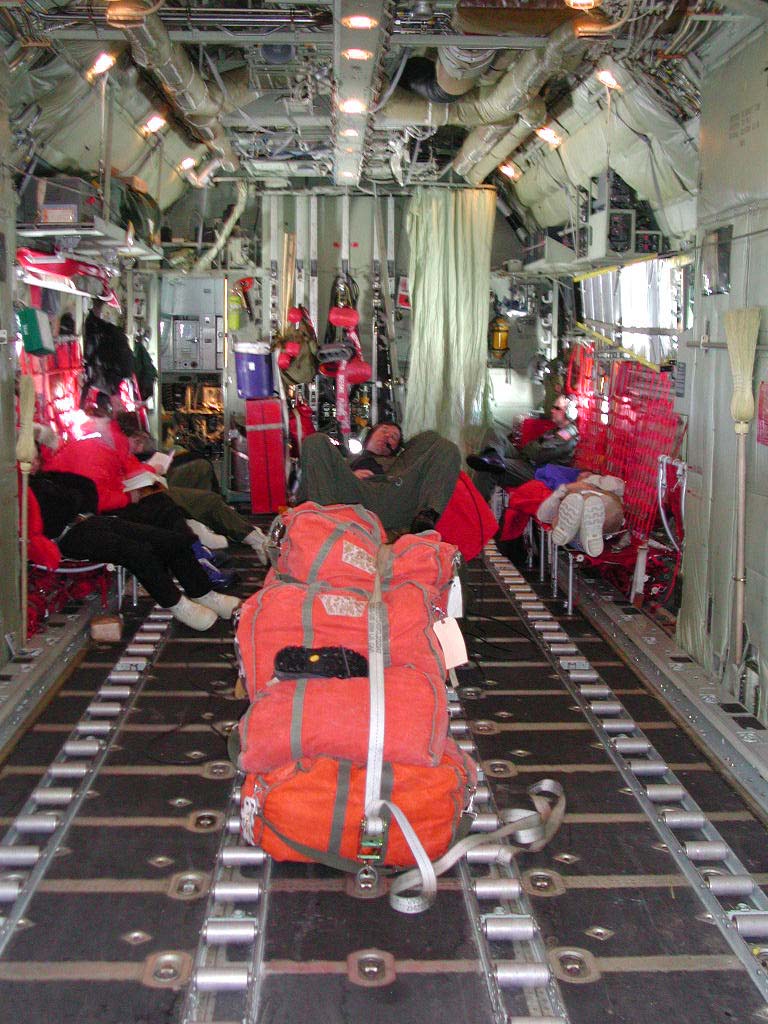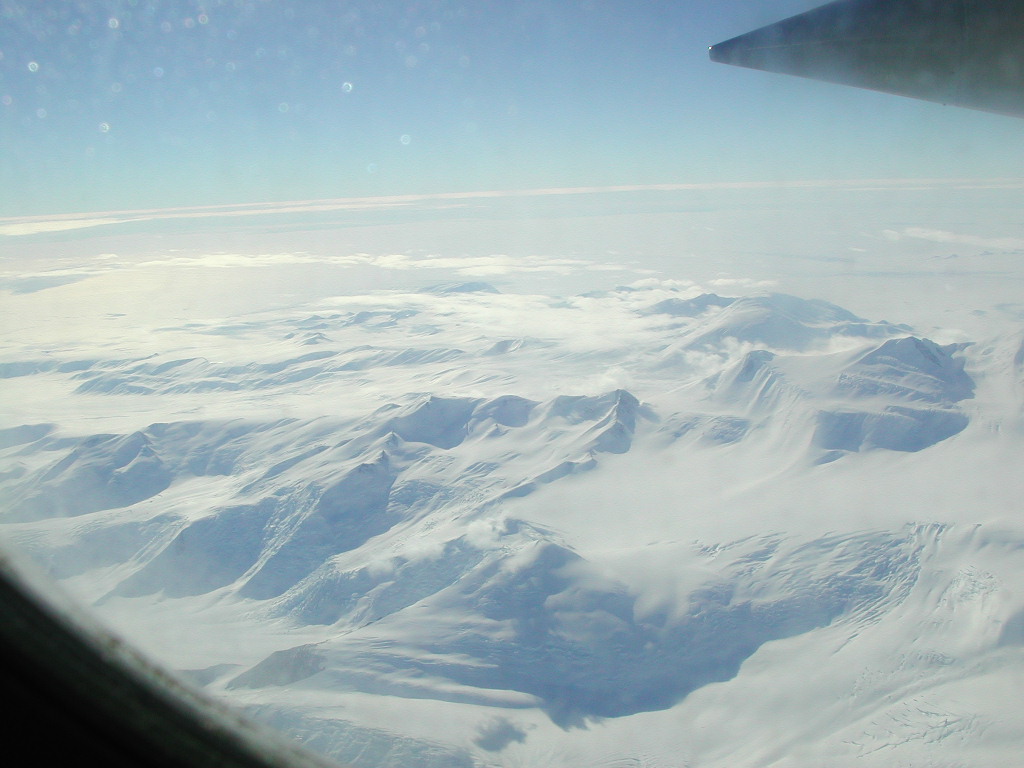
Thursday, December 14, 2000
Last night as we returned from our unsuccessful attempt to land at the pole, we flew back to the same place as we started our journey. A bus that was waiting for us at the airstrip met us. Operations notified the housing office that we needed rooms and the cafeteria to prepare some more dinners. As we disembarked from the plane, we were told to report tomorrow at 7:00 AM.
So, at 7:00 AM, we once again returned to the terminal to start the next try. The weather was a little overcast, temperature in the 20's. It was still warm and bright. A bus promptly carried us off the airstrip. There, we watched as our plane was fueled.
In about an hour, we picked up our earplugs and bag lunches and then boarded the aircraft. This time the plane was flying a cargo run. The plane was fully loaded with supplies for the pole. Again, there was lots of legroom and space for the seven passengers.

The above photo shows yesterday's plane. Notice, how the whole center section is empty, Today, this whole center area is filled with cargo. Our plane, a Hercules C-130, is designed to transport efficiently people and supplies. Seats can easily be stored. Every surface has a hook for storage. Rest room facilities are minimal with some privacy. Note the green curtain in the back. The communication gear, cables and internal wiring are all visible. In this picture you can see the seats have canvas type webbing. I find them more comfortable than a commercial coach seat. In the back of the picture, you can see the blue cooler – our drinking water supply. In the center is our carry-on luggage. Notice one of the crew is relaxing on them. Because of safety regulations, you can see people wearing their white bunny boots. In case the pilot needs to ditch the plane, we are prepared.
We inserted our earplugs and then buckled our seatbelts. Soon, we took off. This time, we hope to land at the pole. About 1/2 hour after we took off, we saw spectacular snow covered mountain ranges. Snow every where except at the steepest peaks. The photo below shows a shot from one of the windows. Not a trace that any human was around. After passing the range, we again flew over the vast white plateau.

Yesterday, I described how the Amanda phototubes detect the light from muons in the ice. As the phototubes are buried in the ice, how do we get the data? In the first generation modules, data were sent over the same line that supplied power to the phototubes. As, this path is several kilometers in length, it was necessary to operate the tubes at an extremely high gain so that signal would reach its destination. The problem with this method is that the phototubes do not like to run at such a high voltage. Pulses from large signals saturate so it is not possible to distinguish a large light flash from a larger one. Phototubes tend to age when run at such a high gain.
The next solution was to send the signal over an optical fiber. Optical fibers are extremely good in transmitting signals over large distances. However, they have some drawbacks. The connector coupling between an Amanda module and the fiber is unreliable. The connection has to be made in the cold as we lower the module in its hole. After the module is lowered, the connection sometimes changes.
I am going to the pole to work on a third method, that is called a digital optical module (DOM} This device records the light from the muons and then sends the data back to the surface via digital information.
Right now we are beginning our landing, so I have to turn off my laptop.
Howard Matis
Somewhere over Antarctica
[Yes, Houston we have landed.]